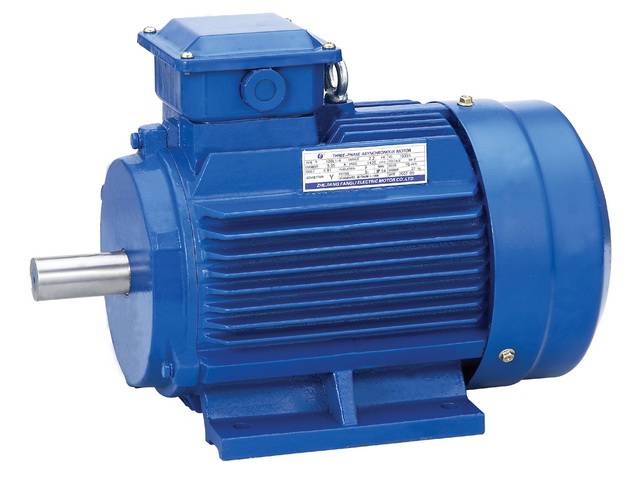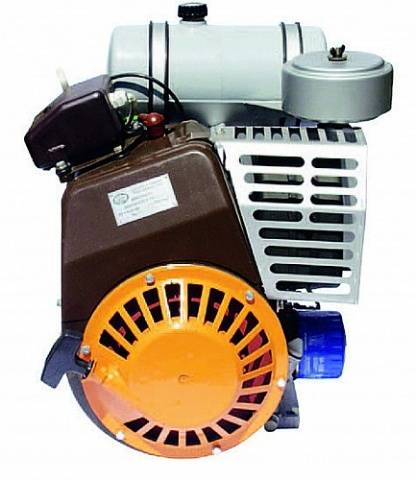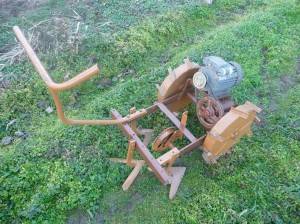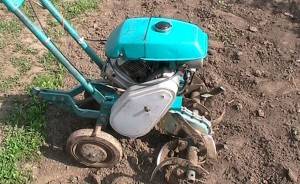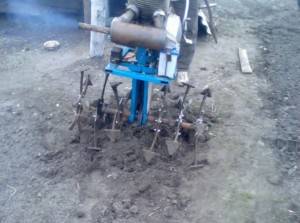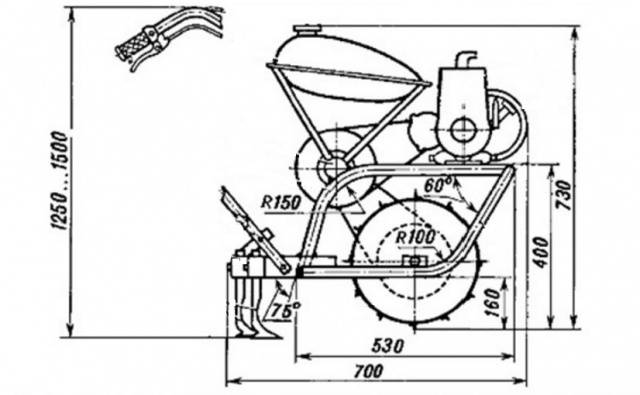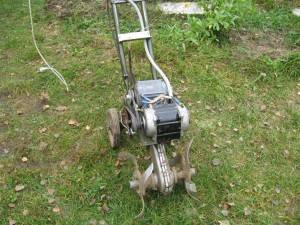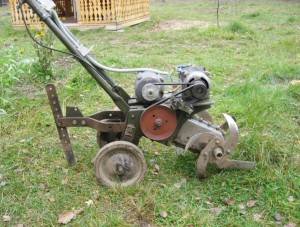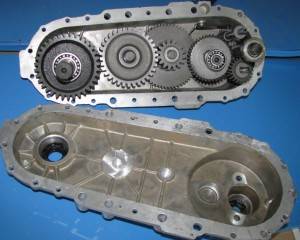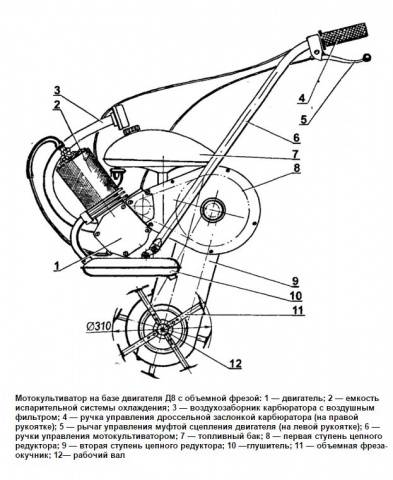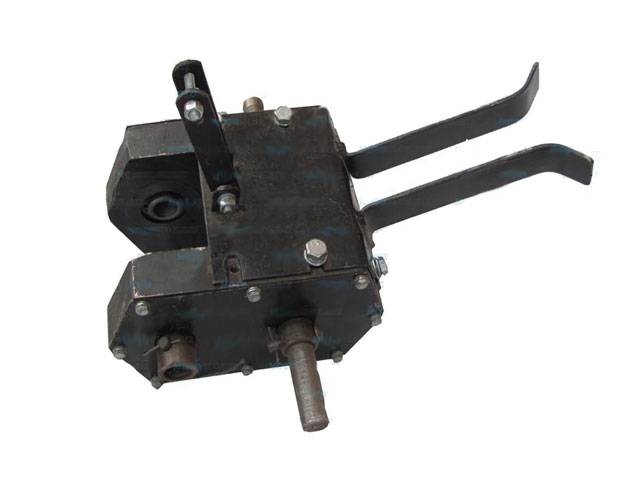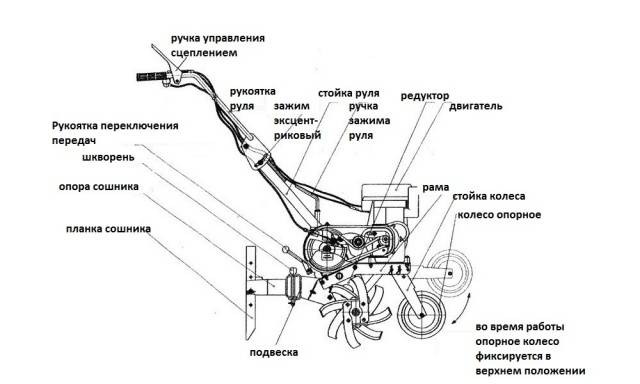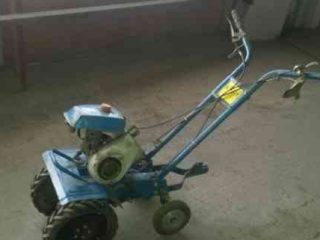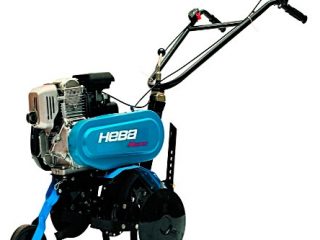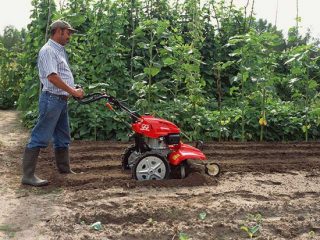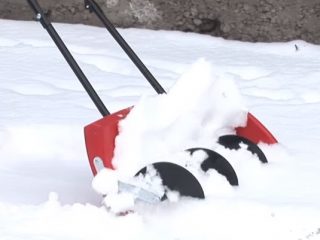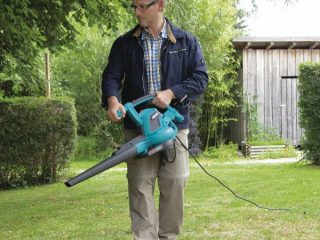Content
Assembling a motor cultivator from old spare parts is not very easy. The parts need to be adjusted to form a functional unit. If a person’s hands grow from the right place, then making a homemade motor cultivator for him will not be difficult.
Types of motor cultivators
Before you start assembling your motor cultivator, you need to familiarize yourself with the types of equipment. This will determine what components the homemade product will consist of and what tasks it can perform.
Differences between cultivators by engine type
On homemade cultivators, you can use two types of motors:
- An electric motor is installed provided there is a three-phase network. This technique is more suitable for small dachas, since the cable will constantly drag behind the cultivator, and you will not be able to travel long distances with it. An electric motor with a power of at least 2 kW is used.
- The best option is a cultivator with an internal combustion engine. The equipment will be completely unattached to an outlet. You can travel far into the field or transport cargo. Engines are petrol and diesel.If you can find an engine with a power of more than 4 hp. p., then the homemade product will make an excellent walk-behind tractor.
Having decided on the type of motor, you can begin to think about the design and functionality of the future cultivator.
Differences between motor cultivators according to the method of movement and soil cultivation
Depending on the method of movement, there are two types of equipment:
- Self-propelled vehicles are equipped with a driven wheel pair;
- Non-self-propelled cultivators do not have drive wheels. Instead, working attachments, for example, cutters, are mounted on a rotating shaft. With their help, the unit threshes the soil and at the same time moves forward.
Self-propelled vehicles are difficult to manufacture. Even 2 gearboxes can be installed here. One of them uses expressway. It is needed to rotate the rotary attachment, which loosens the earth. The drive wheels are driven by the second gearbox.
Non-self-propelled cultivators have the simplest device. Movement occurs due to the rotation of the cutters. The unit has two wheels, but they are not driving, but simply serve as a stop for simplified movement. In general, a motor cultivator cannot be built without support wheels. It will constantly burrow into the ground. In addition, support wheels help regulate the depth of soil cultivation.
If you have already decided to assemble a motor cultivator with your own hands, then it is better to spend more time making a model with drive wheels.
What is needed to assemble a motor cultivator
To assemble the cultivator yourself, you will need drawings of all components. An example of a diagram with dimensions is shown in the photo. You can look for other drawings of cultivators or develop them yourself.
The internal combustion engine for the cultivator is suitable from a moped, a powerful chainsaw or a motorcycle. If you decide to make an electrical installation, then the motor will be suitable from an industrial ventilation or compressor.
A gearbox is needed for any type of motor cultivator. The engine speed is too high. The gearbox reduces the speed, thereby increasing the rotational force of the working shaft.
All components of the cultivator are mounted on the frame, and the equipment is controlled using handles. These elements are welded from a pipe or profile. The structure must be durable. Excess weight is not a hindrance. This will only result in better traction between the wheels of the motorized cultivator and the ground.
Electric cultivator assembly
If you couldn’t find a powerful electric motor, you can take 2 pieces of 1.5 kW each. After being secured to the frame, they are combined with belts into a single system. Only then is a double-groove pulley installed on one engine. From it, the torque will be transmitted to the pulley of the working shaft of the cultivator gearbox.
The rear wheels are persistent. They are simply attached to the frame by an axle with bearings. The leading axle is the front axle of the cultivator. Cutters are put on here, transport wheels or lugs are installed.
The gearbox is perfect for a broken Neva walk-behind tractor. Before use, it must be disassembled to inspect the gears. Parts with broken teeth must be replaced.
The cultivator frame is welded from an ordinary round steel pipe with a diameter of 32 mm. For pens, it is advisable to take a slightly thinner tube, with a diameter of about 20–25 mm. A mount for attachments must be welded to the rear of the frame. It can also be removed from a broken walk-behind tractor. Thrust wheels are suitable for agricultural machinery. The only purchased materials you need are a long wire through which electricity will be supplied to the motors.
Assembling a cultivator with an internal combustion engine
So, a motor cultivator needs an air-cooled internal combustion engine. In our example, we will take the D 8 model from an old moped. The photo shows a diagram of the cultivator. From it you can determine the location of all nodes.
Assembling a motor cultivator has almost the same steps that were taken in the case of using an electric motor. First, a frame with handles is made, and then the motor is mounted. It is designed for air cooling, but the cultivator moves at low speed and this is not enough. You need to install a fan in front of the engine or install a metal container for water around the working cylinder. The device is primitive, but it will prevent the cylinder block from overheating.
The gearbox for this motor-cultivator is a two-stage chain gearbox. The sprocket is taken from a moped, and the other is from a bicycle. All rotating mechanisms are covered with a steel casing.
The video shows the process of making a motor cultivator:
Application of a creeper for a cultivator
A creeper is needed to reduce the speed of movement of a motor cultivator. Most often it is in demand when working with attachments. This unit can be purchased factory-made or made independently.In general, to reduce speed it is easier to put larger diameter wheels on the cultivator. If this option does not suit you, you can assemble a simple creeper:
- a box is assembled from steel sheets;
- an axle with a mounted gear of a larger diameter than on the drive shaft of the cultivator is welded inside;
- the box is bolted to the frame;
- Now all that remains is to tighten the chain, connecting the driven and driving gears.
At this point the creeper is ready. You can install wheels and cutters and continue working with the motor cultivator, but at a lower speed.
Troubleshooting a motor cultivator
Repairing a motor cultivator with your own hands is not difficult due to the simplicity of the equipment’s design. Let's look at the most common problems and methods for eliminating them:
- The cultivator motor does not start. This usually occurs due to lack of spark. You need to try replacing the spark plug. Another problem may be a lack of fuel supply due to clogged filters. They are disassembled, washed in gasoline, and then put back in place.
- The motor stalls during operation. The cause could again be spark plugs or poor fuel supply.
- An extraneous knock inside the engine indicates damage to one of the parts. The motor urgently needs to be disassembled to identify the malfunction, otherwise it will jam.
- A running engine makes a loud noise and overheats. The cause may be a poor fuel mixture or a suspended load while operating the cultivator. The equipment is allowed to cool, and during this time new fuel is prepared.
- The cultivator does not move. There may be something stuck between the cutters or wheels. Alternatively, the belt drive has become loose. If no such problems are detected, then the problem is in the gearbox.
The video talks about the renovation work:
Repairing a homemade motor-cultivator is easier to carry out, since all the components were assembled independently. You know what they are made of. It is better to entrust complex breakdowns of factory-made equipment to service center specialists.
